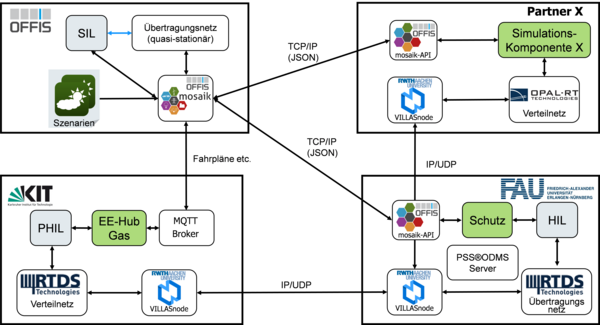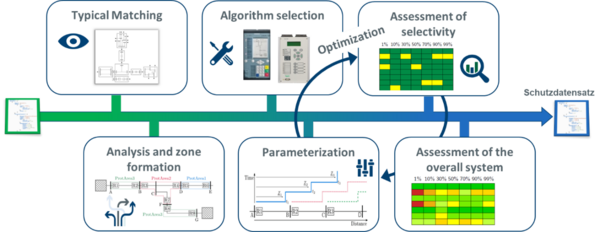Kopernikus ENSURE
Kopernikus – ENSURE -New energy grid structures for energy system transformation
sponsored by BMBF
With a holistic approach, the Kopernikus-Project ENSURE pursues the goal of researching and providing new energy network structures for the energy transition. To this end, a comprehensive energy system optimization is being undertaken, taking into account all relevant energy sources. The most important main objective is to clarify how centralized and decentralized energy supply elements must be designed in the overall system. The second main objective is the practical implementation of the developed systemic concepts and the testing of new technologies in a large-scale demonstration project.
In February 2020, the second phase of the BMBF-funded project Kopernikus ENSURE started. The results of the basic research from Phase I will now be further developed, conceptualized and successively implemented in Phase II.
As a contribution to this, the Chair of Electrical Energy Systems at FAU is developing a hardware and software-based evaluation environment with various partners. The overall goal of this platform is to link individual works to an overall technical concept and to analyze them. The test platform enables different partners to investigate their use cases in the overall system in joint co-simulations. This allows conclusions to be drawn about the interoperability of new technologies and the preparation of demonstrator and field tests. Necessary tools for building up the evaluation environment are in-the-loop co-simulations in order to be able to operate a common platform.
The basis for many investigations are common network models, which are also developed with the participation of the Chair of Electrical Power Systems. Distributed real-time simulation makes it possible to integrate real laboratories into the evaluation environment, for example, to test control algorithms and develop them further on the basis of the real system response. The following figure shows the structure of the evaluation platform and the partners operating the platform.

Another subarea of the Chair of Electrical Power Systems at FAU includes the conceptual design and piloting of a highly flexible assistance system for automated and adaptive protection concept generation. Due to the ambitious goals of the German government to drastically reduce CO2 emissions, to shut down coal and nuclear power plants, as well as to steadily increase the number of renewable energies, the electrical transmission and distribution networks are subject to strong structural changes. As a result, feed-in and fault situations are also changing and becoming more complex to manage. In today's practice, network protection concepts are created once by experts on the basis of many years of experience and with the fragmentary aid of digital tools, and are rarely adapted thereafter. The creation consists of the selection of the protection functions and the protection algorithms as well as the calculation of the protection parameters in close coordination with the existing network structure. Despite the increasing complexity in the future, the methods of protection concept creation have hardly evolved so far. The assistance system (Pro-Toc = Protection Toolchain) developed in this project together with Siemens AG and the Ilmenau University of Technology consists of various modules and tools that can be flexibly combined with each other. The result is an automated tool chain that calculates the optimal protection concept in advance, depending on the current grid structure, the grid status, connected generation plants and other criteria. An overview of the structure of Pro-Toc is shown in the figures below. After completion, the safe protection concept including all calculated values can be exported and loaded back into the digital image. In addition, the parameters will then be automatically transferred to the adaptive protective devices located in the field.


